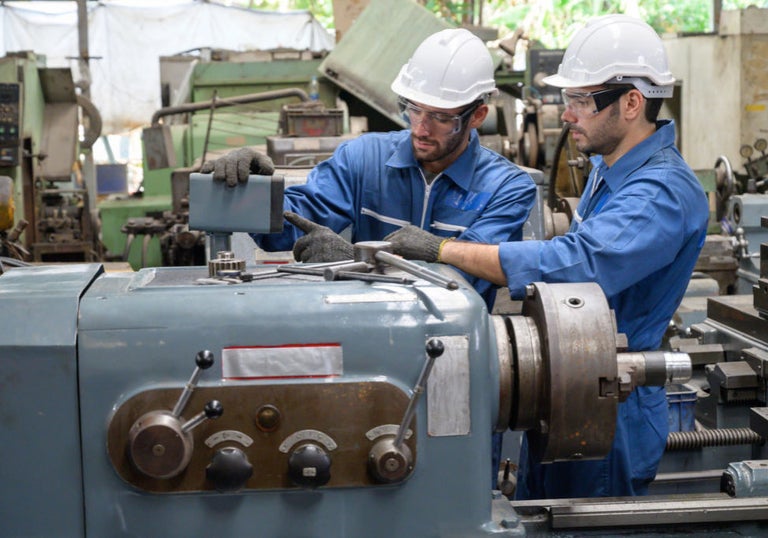The Right Tool for the Right Asset
A plant usually has various types of equipment from multiple manufacturers and suppliers, depending upon the quality and cost. The Vibration monitoring solution you are planning to install must easily integrate and comply with every piece of equipment in the plant- regardless of its age, type, and manufacturer.
Vibration monitoring solutions save time and money for manufacturing plants by predicting equipment health and indicating impending failures beforehand. Various solution providers offer multiple packages and solutions, and hence choosing the right fit for your plant is important. The ideal solution must be easy to use for all, from onsite plant operators and technicians to the plant manager & plant head. It should be intuitive and user-friendly to be mainly accessible to everyone required
The right solution can empower the onsite condition monitoring/ maintenance teams with the correct machine data at the right time for successful plant maintenance assessments with actionable insights.

Optimizing machine health with Vibration Monitoring
The manufacturing industry includes a variety of processes, industries, and raw materials. However, all manufacturers share a common enemy: Unplanned Downtime, which affects productivity, asset health, brand reputation, and bottom lines. With the advent of digital and analytics solutions, maintenance management has evolved into a complex field that allows manufacturers to increase machine availability and minimize production downtime while improving efficiency and reducing costs.
Vibration monitoring solution comprises of equipment and sensors, integration of process parameters, data management to sense, record, process data and provide actionable insights on the machine condition. Artificial intelligence, machine learning, and IoT can help to handle large data and improve analysis accuracy. Some of the monitoring tools available today include:
- Portable vibration data collectors and analyzers.
- Short-term surveillance vibration data collectors and analyzers (which can be installed temporarily).
- Embedded sensors mounted to equipment which can monitor vibration, temperatures, and other inputs.
- Permanently mounted accelerometers (which can be either wired or wireless) to provide either intermittent, or constant monitoring.
Data from these solutions can be monitored manually by an analyst, fed into control room systems, an automated analysis software, or a hybrid model of the three.

How to choose the best solution
All of these options raise the question, “which solution is right for me? Here are some points to consider:
- Each has its own benefits and drawbacks.
- What is the payoff versus the cost?
- Must you choose only one? (No)
Best Fit Approach to Monitoring
Understanding the strengths and weaknesses of each approach is the first step in choosing the right vibration monitoring solution.
Periodic Monitoring
Periodic monitoring involves taking manual readings at intervals determined by the history of the asset or extrapolated from preventative maintenance schedules. It’s a good approach to monitor high numbers of points. On the downside, taking accurate readings requires trained technicians, whether in-house or third-party.
Data is typically stored and managed locally, and the volume increases substantially over time. Finally, analysis and interpretation of the readings requires expertise and will involve training a staff engineer, hiring a skilled technician, or working with a third-party reliability service.
Assets suited for periodic monitoring
- Stable assets: Assets with mean times between failure (MTBFs) of a year or more can be tracked very effectively using periodic monitoring approach on a monthly or quarterly basis.
- Low-risk assets: Assets which have a direct standby unit, spares in inventory that can be quickly installed or is unlikely to impact overall productivity of the facility and/or operation can be considered for periodic based monitoring.
Real Time Online Vibration Analysis
Online vibration analysis uses networked sensors installed on the equipment to gather data and forward it to a local sever or cloud for analysis and alerts. The frequency of readings makes rea time online vibration monitoring very effective at detecting fast-developing defects. Although the equipment traditionally has been expensive, a new generation of budget-friendly, cloud-based condition monitoring systems is making the technology practical for a wider range of assets.
As always, there are trade-offs. Even applied at discrete intervals, continuous online condition monitoring generates vast amounts of data. In most cases, that data is ported out to the cloud for storage, cloud-based software can be used to automatically run preconfigured analytics against the data, reducing the amount of expertise needed to convert sensor output into actionable information.
Assets suited for real time online monitoring
- Assets that fail frequently: If an asset is failing every six months or less, despite regular manual readings, consider continuous online vibration monitoring.
- Critical asset: Asset that would have catastrophic health, safety, environmental or customer-related consequences if it failed should be continuously monitored.
- Remote assets: Assets that are hard to access for manual readings.
- Troubled assets: Assets with issues or developing defect, maintenance has a choice between making the repair immediately or delaying the repair while continuing to monitor the issue.
- Safety-related assets: Assets whose failure can cause immediate harm to nearby operators and those whose failure could create a dangerous situation, for personnel and the facility as a whole.
- Variable-speed assets: Certain classes of assets constantly accelerate and decelerate, which can cause premature bearing failure, hence require continuous monitoring

When it comes to maintaining industrial equipment efficiently, it’s important that you always prioritize those assets that are the most critical for the operation of your business.
Simplify plant reliability
Today’s facilities are likely to have hundreds, if not thousands of potential failure points. It is impossible to apply one condition monitoring approach to all situations. Singular approaches will have its pros and cons and many times might be inadequate for an entire facility. Hybrid strategy needs to be considered in case of complex machinery and multiple assets. Taking a hybrid monitoring approach, can help you to streamline maintenance, increase uptime, ensure safety, and maximize productivity & profitability across the operation.

Connect with Acoem
Get more information about vibration monitoring and how it can help you achieve plant reliability. Find out more about our comprehensive solutions, services, and training programs.









